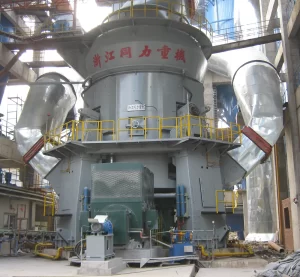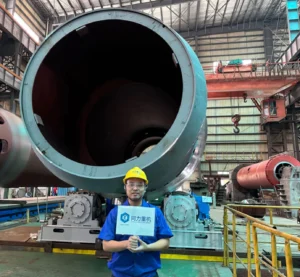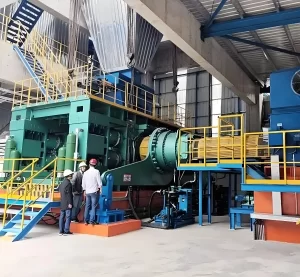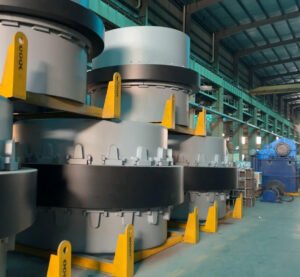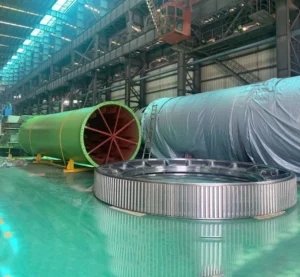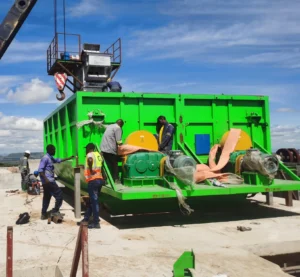
Introduction:
As we all know, cement will gradually solidify after pouring and develop to the expected strength. Cement needs to be cured during the solidification process, and it is very important to understand the setting time of cement. How many hours does it take for cement to solidify? The setting time of cement is usually divided into two stages: initial setting and final setting. Initial setting means that the cement begins to lose plasticity, while final setting means that the cement is completely hardened and reaches a certain strength. Generally speaking, the initial setting time of cement is between 3 and 4 hours after pouring, and the final setting takes 6 to 12 hours. It is usually recommended to reserve 3 to 4 days for the cement to completely solidify and harden. However, the specific setting time of cement will be affected by many factors, including but not limited to the type of cement, ambient temperature and humidity, water-cement ratio, and whether admixtures such as accelerators or retarders are added. In this article, we will have an in-depth understanding of this topic.
The importance of cement setting time:
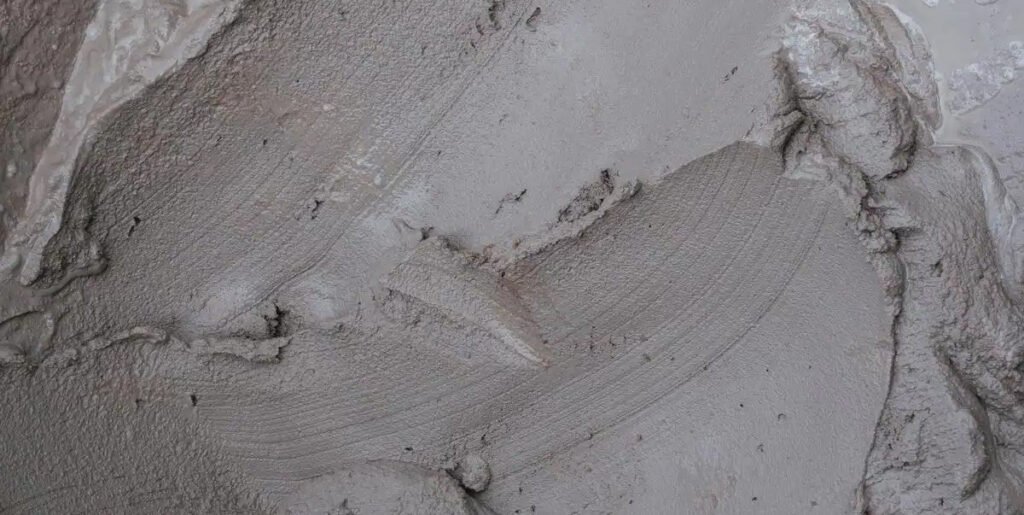
The setting time of cement is of great significance to construction operation, strength development and durability. The initial setting and final setting time provide an operation time window for construction, ensuring the smooth progress of mixing, pouring and other processes; reasonable setting time is the basis for the full hydration reaction of cement, which directly affects the normal development of concrete and mortar strength.
1. Ensure the smooth progress of construction operations
The initial setting time refers to the time from adding water to mixing cement to the time it starts to lose plasticity, and the final setting time refers to the time from adding water to mixing to the time it completely loses plasticity and starts to generate strength. This time window provides construction personnel with enough time to mix, transport, pour, vibrate, and plaster concrete or mortar. If the initial setting time is too short, the cement paste will quickly lose fluidity, and it will become difficult to operate during transportation and pouring, which will result in the inability to accurately place the material in the designed position; if the final setting time is too long, it will extend the construction period, affect the subsequent process, and increase construction costs. For example, in large-volume concrete pouring projects, concrete needs to be poured in layers before initial setting, and ensure good bonding between layers to avoid cold joints.
2. Ensure the normal development of structural strength
During the setting process of cement, the hydration reaction proceeds gradually, generating various hydration products, which gradually harden the paste and generate strength. The reason why fast-hardening cement can harden quickly is that its mineral composition (such as high tricalcium aluminate content) and fineness and other factors make it undergo a violent hydration reaction in a short time. Although the initial setting time must not be earlier than 45 minutes, it is usually between 15-45 minutes, and the final setting time is generally between 1.5-4 hours, and it can reach a high strength within 1 day. If the setting time is unreasonable, for example, in a high temperature environment, the cement hydration speed is accelerated, the initial setting time is significantly shortened, and the hydration reaction is not sufficient, it will affect the structural formation of the cement stone, resulting in insufficient strength growth in the later stage, and it cannot meet the bearing requirements of the engineering structure.
3. Ensure durability and stability:
The appropriate setting time helps to improve the durability of building materials. The initial setting time of pozzolanic silicate cement (PPC) is usually no earlier than 45 minutes, and the final setting time is no later than 10 hours. Although the pozzolanic mixed materials added may slow down the early setting speed, they can further react with cement hydration products in the long-term hydration process to fill pores and improve the compactness of concrete, thereby improving its durability such as impermeability and frost resistance. If the setting time is inappropriate, the internal structure of the concrete is uneven, the porosity increases, and moisture and harmful media are easy to invade, accelerating the aging and damage of the material and reducing the service life of the building.
The Consequences of improper cement coagulation:
Improper coagulation can cause a series of serious problems. Too short coagulation time or interrupted construction can easily form cold joints, weakening the integrity of the structure; abnormal coagulation can interfere with cement hydration, resulting in failure to meet strength standards; and disordered coagulation time can destroy the internal structure of the material, reduce water retention and workability, cause durability problems such as freeze-thaw damage and steel corrosion, and shorten the service life of the building.
1. Cold joints
When the setting time of concrete is too short, or there is an interruption during the pouring process, the newly poured concrete cannot fully blend with the partially set concrete, and cold joints will be formed. For example, in the pouring process of bridge piers, if the concrete is not transported in time, the first poured concrete has already set initially, and the later poured concrete cannot bond well with it. When the structure is stressed, the cold joints are likely to become weak links, reducing the integrity and bearing capacity of the structure, which may cause crack expansion and even affect the safe use of the bridge.
2. Strength reduction
Abnormal cement setting will directly affect the strength development. The normal initial setting time of low-heat cement shall not be earlier than 60 minutes, and the final setting time shall not be later than 12 hours. If its mineral composition changes or is disturbed by external factors during production or use, resulting in too fast setting, the cement particles cannot be fully hydrated, and the generated hydration products are not enough to fill the pores and form a strong skeleton structure, the concrete strength will be significantly reduced. On the contrary, if the setting is too slow, the structure being formed may be damaged during the maintenance period due to external disturbances or environmental factors, which will also lead to substandard strength and make the building unable to withstand the design load.
3. Durability issues
Improper setting time will seriously damage the durability of the material. The initial setting time of masonry cement should not be earlier than 60 minutes, and the final setting time should not be later than 10 hours. If the setting time is disordered, the water retention and workability of the mortar will deteriorate, the density of the masonry will be difficult to ensure, and moisture will easily penetrate into the wall, causing freeze-thaw damage, steel corrosion and other problems. Moreover, abnormal setting may cause micro cracks inside the cement stone, making it easier for harmful chemicals to enter, accelerating the corrosion of the material and shortening the service life of the building.
What is the Setting Times for Various Cement Types?
Here we are introducing the setting time of 6 types of cement which are: OPC, PPC, RP hardening, Low heat, Masonry Cement. And we make a comparison table to help you better understand the difference.
Ordinary Portland Cement (OPC):
Grades 33, 43, and 53: Initial setting time should not be earlier than 45 minutes, and final setting time should not be later than 10 hours. However, in actual projects, cements from different manufacturers have different setting times due to differences in composition and production processes. Generally speaking, the setting time of grade 33 cement is relatively long, the setting time of grade 53 cement is relatively short, and grade 43 is between the two.
Pozzolana Portland Cement (PPC):
The initial setting time is usually no earlier than 45 minutes, and the final setting time is no later than 10 hours. However, due to the influence of volcanic ash mixed materials, its setting time may be slightly longer than that of ordinary Portland cement, especially the early setting speed may be slower, which makes it better avoid cracking problems caused by the concentrated release of cement hydration heat when used in some large-volume concrete projects.
Rapid Hardening Cement:
The initial setting time shall not be earlier than 45 minutes, and the final setting time shall not be later than 10 hours. Compared with ordinary Portland cement, rapid hardening cement is characterized by being able to achieve higher strength in a shorter time. Its early setting and hardening speed is fast, and it can generally achieve higher strength within 1 day. This is achieved by adjusting the mineral composition and grinding fineness of the cement.
Low Heat Cement:
The initial setting time shall not be earlier than 45 minutes, and the final setting time shall not be later than 12 hours. The main feature of low heat cement is low hydration heat, and its setting time may be slightly longer than ordinary cement. This is to meet the requirements for temperature control in large-volume concrete projects, reduce the increase in internal temperature of concrete caused by cement hydration heat, and thus reduce the risk of cracks in concrete.
Masonry Cement:
The initial setting time shall not be earlier than 60 minutes, and the final setting time shall not be later than 10 hours. Masonry cement is mainly used in masonry projects and has high requirements for water retention and workability. The setting time is stipulated to ensure sufficient operation time during the masonry process and enable the masonry to reach the necessary strength after a certain period of time.
Setting time comparison table regarding different type of cement:
| Type of Cement | Initial Setting Time | Final Setting Time | Notes |
| Ordinary Portland Cement (OPC) | Not less than 30–45 minutes | Not more than 10 hours | Standard grades: 33, 43, 53. Widely used in general construction. |
| Portland Pozzolana Cement (PPC) | Not less than 30–45 minutes | Not more than 10 hours | Slower setting due to pozzolanic materials. Improves long-term strength. |
| Rapid Hardening Cement (RHC) | Typically 15–45 minutes | Typically 1.5–4 hours | Faster strength gain. Suitable for urgent repair works. |
| Low Heat Cement (LHC) | Not less than 60 minutes | Not more than 12 hours | Used in mass concreting (e.g., dams) to reduce thermal cracking. |
| Masonry Cement | Not less than 60 minutes | Not more than 10 hours | Contains additives for improved workability. Not suitable for structural use. |
| Sulphate-Resisting Portland Cement | Not less than 30 minutes | Not more than 10 hours | Used in environments with high sulphate exposure (e.g., sewage systems). |
| White Cement | Not less than 30–45 minutes | Not more than 10 hours | Decorative purposes. Setting time similar to OPC. |
| Hydrophobic Cement | Not less than 30 minutes | Not more than 600 minutes | Special water-repellent coating delays hydration slightly. |
| High Alumina Cement | Typically 30–60 minutes | Generally 3.5–5 hours | Very rapid strength gain. Used in refractory and marine applications. |
| Slag Cement (Ground Granulated Blast Furnace Slag - GGBFS) | Not less than 45 minutes | Up to 10 hours | Slow setting, improves durability and sulfate resistance. |
What are the Factors Influencing Cement Setting Time?

So in last paragraph we have listed the setting time of different kinds of cement and continue on we are discussing the factorys that affets the setting time.
Cement Composition:
- The main mineral components in cement, such as tricalcium aluminate (C₃A) and tricalcium silicate (C₃S), play a key role in the setting time.
- Tricalcium aluminate (C₃A): C₃A has an extremely fast hydration rate and is an important contributor to the early strength development of cement, but it is also the main factor causing the rapid setting of cement. Cement with a high C₃A content, such as rapid hardening cement, has a significantly faster early setting rate. Studies have shown that when the C₃A content in cement exceeds 8%, if it is not controlled, the cement may set within a few minutes.
- Tricalcium silicate (C₃S): C₃S is the main source of cement strength. Its hydration rate is relatively moderate and can continuously provide strength growth. In ordinary Portland cement (OPC), the C₃S content is generally 40%-60%. As its content increases, the early strength development of cement is accelerated and the setting time is shortened accordingly.
Gypsum Content:
Gypsum (hydrate of calcium sulfate) is an indispensable retarder in cement. When cement comes into contact with water, C₃A rapidly hydrates to produce a large amount of aluminate complexes, which promotes the rapid coagulation of cement. Gypsum will react with the aluminate generated by the hydration of C₃A to form a layer of insoluble ettringite (AFt) film on the surface of C₃A particles. This film can prevent water from further entering the interior of C₃A particles, slowing down its hydration rate, thereby delaying the coagulation of cement. Generally speaking, the appropriate amount of gypsum in cement is 3%-5% (mass fraction). If the amount of gypsum is insufficient, it cannot effectively inhibit the rapid hydration of C₃A, which will cause the cement to coagulate rapidly; if the amount is too much, it may affect the later strength development of cement and even cause the cement stone to expand and break.
Fineness of Cement:
The fineness of cement particles has a significant effect on the hydration rate and coagulation time. The finer the particles, the larger the specific surface area of cement, the larger the contact area with water, and the faster the hydration reaction can proceed. Research data shows that when the specific surface area of cement increases from 300m²/kg to 400m²/kg, the initial setting time of cement may be shortened by 1-2 hours. For example, fast-hardening cement accelerates the hydration reaction by grinding finer (specific surface area is usually 350-450m²/kg), thereby shortening the setting time and achieving rapid hardening; while low-heat cement generally has a relatively small specific surface area (about 280-320m²/kg), a slower hydration rate, and a relatively longer setting time.
Water-Cement Ratio:
The water-cement ratio refers to the mass ratio of water to cement in concrete, which has an important influence on the setting time of cement. The right amount of water can ensure that the cement is fully hydrated, but when the water-cement ratio is too large, the excess water will form pores in the cement paste, reduce the density of the cement paste, delay the contact and coagulation between cement particles, and extend the coagulation time. Generally, for every 0.1 increase in the water-cement ratio, the initial setting time of cement may be extended by 0.5-1 hour. On the contrary, if the water-cement ratio is too small, the cement cannot be fully hydrated, which will make the cement paste too dry and thick, and the fluidity is poor. Although the early strength increases rapidly, it may also cause cement false coagulation, affecting the construction quality.
Temperature and Humidity:
- Temperature: The ambient temperature has a significant effect on the setting time of cement. The increase in temperature will accelerate the hydration reaction rate of cement and shorten the setting time. In the range of 20℃-30℃, the initial setting time of cement may be shortened by 0.5-1 hour for every 10℃ increase in temperature. However, when the temperature is too high (over 60°C), the surface of cement particles will rapidly hydrate to form a dense hydration product layer, which will hinder further water penetration and may lead to slow growth of cement strength in the later stage. In a low temperature environment (below 5°C), the cement hydration reaction is greatly slowed down, the setting time is significantly prolonged, and hydration may even stop. Therefore, it is often necessary to take insulation measures or use early strength agents during winter construction.
- Humidity: Humidity also has an important impact on cement coagulation. Sufficient humidity can ensure continuous hydration of cement. If the environment is too dry, the water in the cement will evaporate quickly, resulting in the inability to fully carry out the hydration reaction, the coagulation process is hindered, and even the shrinkage and cracking of the cement stone may occur. It is generally required that the relative humidity of the environment be maintained above 90% during the curing stage after concrete pouring to ensure normal coagulation and hardening of cement.
Admixtures:
- Accelerators: Commonly used accelerators include calcium chloride, triethanolamine, etc., which can accelerate the hydration reaction of cement and shorten the setting time. For example, in winter construction, adding 0.5%-2% (cement mass) of calcium chloride can shorten the initial setting time of cement by 2-4 hours, thus ensuring that the concrete can quickly reach a certain strength at low temperatures.
- Retarder: Retarder such as wood calcium and molasses, by adsorbing on the surface of cement particles, hinders the contact between cement particles and water, or reacts with cement hydration products to generate insoluble substances covering the surface of cement particles, thereby delaying the hydration reaction and prolonging the setting time. In large-volume concrete construction, adding 0.1%-0.3% (cement mass) of retarder can prolong the initial setting time of cement by 3-6 hours, effectively avoiding cracks caused by concentrated release of hydration heat.
Storage Conditions:
The storage conditions of cement have a great influence on its setting time. Cement has strong hygroscopicity. If the storage environment is humid, cement will absorb moisture in the air and undergo partial hydration reaction, resulting in reduced cement activity and prolonged setting time. For example, if cement is stored for 1 month in an environment with a relative humidity of more than 80%, the setting time of cement may be 2-3 hours longer than that of fresh cement, and the strength will also decrease significantly. In addition, if the storage time is too long (more than 3 months), even in a dry environment, cement will deteriorate due to slow reaction with gases such as carbon dioxide in the air, resulting in longer setting time and reduced strength. Therefore, cement should be kept dry during storage, the storage period should not be too long, and cements of different batches and varieties should be stored separately to avoid mixing.
How to Test Cement Setting Times?

What is Vicat Apparatus?
- The Vicat instrument is a professional instrument used to measure the setting time of cement. It is mainly composed of a standard consistency test rod, a test needle for initial setting, a test needle for final setting, a sliding rod, a test mold, and a circular mold for holding cement paste.
- The standard consistency test rod is a metal hollow cylinder with a diameter of 10mm and a length of 50mm. It is connected to the sliding rod and can slide freely in the vertical direction. There are precise scales on the surface of the sliding rod to record the depth of the test rod sinking. The test needle for initial setting and the test needle for final setting are both special metal needles. The effective length of the initial setting test needle is 50mm and the diameter is 1.13mm; the effective length of the final setting test needle is 30mm, and the diameter is also 1.13mm. The tip of the final setting test needle is annular, so as to more accurately judge the final setting state of cement. The test mold is a truncated cone with an inner diameter of 65mm at the upper mouth, 75mm at the lower mouth, and a height of 40mm.
- The Vicat instrument reflects the setting state of cement by the sinking depth of the test rod or test needle in the cement paste. During the test, the instrument can provide stable test conditions that meet the standard requirements, such as vertical descent of the test rod or test needle, constant loading speed, etc.
What is the procedure or process of cement setting time test?
1. Preparation
- First, place the Vicat instrument vertically on a horizontal, stable and vibration-free test bench, and check whether the sliding rod can slide freely to ensure that there is no obstruction. At the same time, wipe the inner wall of the test mold, the top surface of the round mold, the test rod and the test needle with a wet cloth to keep the surface moist to prevent the water from evaporating too quickly and affecting the test results.
- According to the relevant standards such as "Standard Consistency Water Consumption, Setting Time and Stability Test Method of Cement" (GB/T 1346-2011), the standard consistency water consumption test method is adopted to determine the standard consistency water consumption of cement paste. Generally, the water consumption is adjusted through multiple tests so that the cement paste is at the standard consistency, the test rod sinks into the paste and the distance from the bottom plate is 6mm±1mm. The water consumption at this time is the standard consistency water consumption (in terms of cement mass percentage).
- Put the weighed cement sample into a clean mixing pot, add water according to the determined standard consistency water consumption, and stir it with a cement paste mixer. First, set the mixer to stir at low speed for 120s, stop stirring for 15s, and then stir at high speed for 120s to complete the preparation of cement paste.
2. Initial setting time determination
- Immediately put the prepared cement paste into the wet test mold, tamp it with a knife, gently vibrate it several times, scrape off the excess paste, and make the surface of the paste in the test mold flat. Then place the test mold in a moisture curing box for curing. The curing temperature is controlled at (20±1)℃ and the relative humidity is not less than 90%.
- When the curing lasts for 30 minutes after adding water, place the test mold on the Vicat instrument so that the initial setting test needle contacts the surface of the cement paste. Tighten the screw for 1-2s and then suddenly release it to allow the test needle to sink vertically and freely into the cement paste. Record the depth of the test needle when the test needle stops sinking or releases the test needle for 30s.
- When the test needle sinks to 4mm±1mm from the bottom plate, the cement reaches the initial setting state. The time from the addition of water to the cement to the appearance of the initial setting state is the initial setting time of the cement.
3. Final setting time determination
- When the cement is close to final setting, install the final setting test needle on the sliding rod of the Vicat instrument, replace the test mold (or move the test mold carefully to avoid vibration of the formed cement paste), and continue to cure in the moisture curing box.
- Measure once every 15 minutes. When the test needle sinks 0.5mm into the specimen, that is, when the annular attachment begins to leave no trace on the specimen, the cement reaches the final setting state. The time from the addition of water to the cement to the appearance of the final setting state is the final setting time of the cement.
What is the official Standards and Criteria for cement setting time determination?
China National Standards:
In China, cement setting time testing must strictly follow the "Test Methods for Water Consumption, Setting Time and Stability of Cement Standard Consistency" (GB/T 1346 - 2011). This standard makes detailed provisions for the technical parameters, test conditions (such as temperature and humidity), test steps and result judgment of the Vicat instrument. For example, it is clearly stipulated that the initial setting time of ordinary Portland cement shall not be earlier than 45 minutes, and the final setting time shall not be later than 10 hours; the initial setting time of volcanic ash Portland cement, fly ash Portland cement, and composite Portland cement shall not be earlier than 45 minutes, and the final setting time shall not be later than 10 hours; the initial setting time of rapid hardening Portland cement shall not be earlier than 45 minutes, and the final setting time shall not be later than 10 hours; the initial setting time of low-heat cement shall not be earlier than 60 minutes, and the final setting time shall not be later than 12 hours; the initial setting time of masonry cement shall not be earlier than 60 minutes, and the final setting time shall not be later than 10 hours.
International standards:
Internationally, ISO 9597:2008 "Cement - Determination of setting time" formulated by the International Organization for Standardization (ISO) also regulates the test method for cement setting time. Its principle is similar to that of our country's standard, but there may be differences in some details, such as the dimensional accuracy requirements of the test mold, the calibration cycle of the instrument, etc. In international trade and multinational projects, the corresponding standards are usually selected according to the contract agreement to test and determine the cement setting time.
Best Practices for Cement Setting:

Ensuring reasonable cement setting requires multi-dimensional practices. At the raw material level, select cement varieties according to project requirements, adjust the mixed materials and fineness; in terms of construction mix ratio, accurately control the water-cement ratio, and use admixtures reasonably; in terms of construction site management, take corresponding measures for different temperature and humidity environments, such as cooling and moisturizing at high temperatures, and heating and insulation at low temperatures. At the same time, optimize the construction organization, ensure efficient connection of each link, and prevent the setting time from getting out of control.
Frequently asked question about cement setting time:
Temperature has a significant effect on cement setting. High temperatures speed up the hydration reaction of cement because heat increases molecular motion, causing cement to react with water more quickly, thus shortening the setting time. Low temperatures slow down the hydration process and extend the setting time. However, temperatures that are too high or too low may have an adverse effect on the formation of the cement structure, resulting in insufficient strength and durability of the final product.
The setting time of cement can be adjusted. The setting time can be adjusted by changing the mineral composition of cement, such as increasing or decreasing the content of tricalcium aluminate and other ingredients. In addition, adding admixtures is also a common method, such as retarders can extend the setting time, and accelerators can shorten the setting time. At the same time, the temperature and humidity of the construction environment will also affect the setting time of cement, and the setting time can be adjusted to a certain extent by controlling the environmental conditions.
If cement solidifies too quickly, construction workers will be pressed for time in mixing, transporting, pouring and other operations of concrete or mortar, making it difficult to place the materials accurately in the designed position, and may also affect the formation of cement stone structure, resulting in insufficient strength growth in the later stage. If it solidifies too slowly, it will extend the construction period, increase costs, and the internal structure of the concrete may be uneven, with increased porosity, making it easy for moisture and harmful media to invade, reducing the durability and service life of the building.
Different admixtures have different effects on setting time. Retarders can extend the setting time of cement, and by inhibiting the contact between cement particles and water or delaying the hydration reaction, they facilitate the construction of concrete in high temperature environments or long-distance transportation. Accelerators shorten the setting time and accelerate the hydration of cement, which is suitable for winter construction or emergency repair projects. Water reducers generally have little effect on setting time while reducing water consumption, but high-performance water reducers may extend the initial setting time, which helps improve the working performance and strength development of concrete.
Generally speaking, it is not recommended to walk on concrete after 12 hours. The initial setting time of general concrete is about 1-4 hours, and the final setting time is about 6-10 hours. However, the strength of concrete is still low after 12 hours, and has not yet reached the strength requirement to withstand people walking on it. Walking at this time may cause damage such as footprints and indentations on the concrete surface, affecting its appearance and subsequent performance. It may also damage the internal structure of the concrete, reducing its overall strength and durability.
The curing time of 4-inch thick concrete is affected by many factors. Under normal temperature (about 20°C) and suitable humidity conditions, the initial setting time is generally about 2-4 hours, and the final setting time is about 6-8 hours. However, it usually takes 7-28 days to reach sufficient strength for practical purposes such as bearing. Lowering the temperature will prolong the curing time, while increasing the temperature will accelerate the curing. Insufficient humidity will also affect the curing effect, resulting in slow strength growth.
Standing water has an adverse effect on concrete. First, long-term standing water will gradually wash away the cement paste in the concrete, exposing the aggregate and reducing the surface strength and wear resistance of the concrete. Second, standing water will increase the humidity of the concrete, making the steel bars more susceptible to corrosion, which in turn affects the durability of the concrete structure. In addition, in low-temperature environments, standing water may freeze and expand, causing freeze-thaw damage to the concrete, causing peeling, cracks and other damage to the concrete surface. In severe cases, it will weaken the overall performance of the concrete structure and shorten its service life.
In concrete maintenance, water spraying is a common and effective method. Concrete needs to maintain appropriate humidity during the solidification and hardening process. Water spraying can provide it with moisture, which helps the cement hydration reaction to continue, thereby improving the strength and durability of concrete.
At the same time, water spraying can also reduce the temperature of the concrete surface and reduce shrinkage and cracks caused by temperature changes. However, the timing and frequency of water spraying are critical. Generally, water spraying should be started within a period of time after the concrete is poured, and the number of water spraying should be reasonably controlled according to environmental conditions and other factors to ensure that the concrete surface is always in a moist state and promote its good solidification.
If concrete solidifies too quickly, the following problems will occur:
1. Construction operation difficulties: The time for concrete to lose plasticity is too short, and it is difficult for construction workers to complete operations such as mixing, transportation, pouring, vibrating and plastering, which may cause the concrete to be unable to be accurately placed in the designed position, affecting the construction quality.
2. Insufficient strength development: Too fast solidification causes insufficient cement hydration reaction, affecting the formation of cement stone structure, resulting in the concrete's later strength growth not meeting expectations and unable to meet the bearing requirements of the engineering structure.
3. Reduced durability: Too fast solidification will make the internal structure of concrete uneven, increase porosity, and easily penetrate moisture and harmful media, thereby reducing the concrete's durability such as impermeability and frost resistance, and shortening the service life of the building.
There are many ways to determine whether concrete is completely cured (cured). First, you can make a preliminary judgment based on time. Generally, concrete needs to be cured for 7 to 28 days under standard curing conditions, depending on the type of cement and the mix ratio. Secondly, observe the surface of the concrete. If the color is uniform, there is no obvious change, and there is no trace of moisture, it indicates that it is dry and may be close to being completely cured. Furthermore, use a rebound hammer to test the surface hardness of the concrete. When the hardness reaches the strength value required by the design, the concrete can be considered to be basically cured. In addition, core sampling can be performed to conduct a compressive strength test. If the strength of the core sample meets the design strength grade, it can be determined that the concrete has been completely cured.
Conclusion:
In this article, we have comprehensively introduced what is cement setting time, how to measure it, and the importance of setting time to cement strength. Understanding the setting time of cement is not just a matter of time, but a key factor affecting the strength, safety and success of any construction project. Although initial setting may begin within 30 to 60 minutes, reaching full structural strength is a gradual process that is affected by cement type, environmental conditions and meticulous site management. Hasty setting or misjudgment of curing time may result in cracks, weakened adhesion or long-term durability issues. If you are also interested in cement grinding equipment, feel free to contact us for support regarding cement ball mill, vertical roller mill and rotary kiln.

